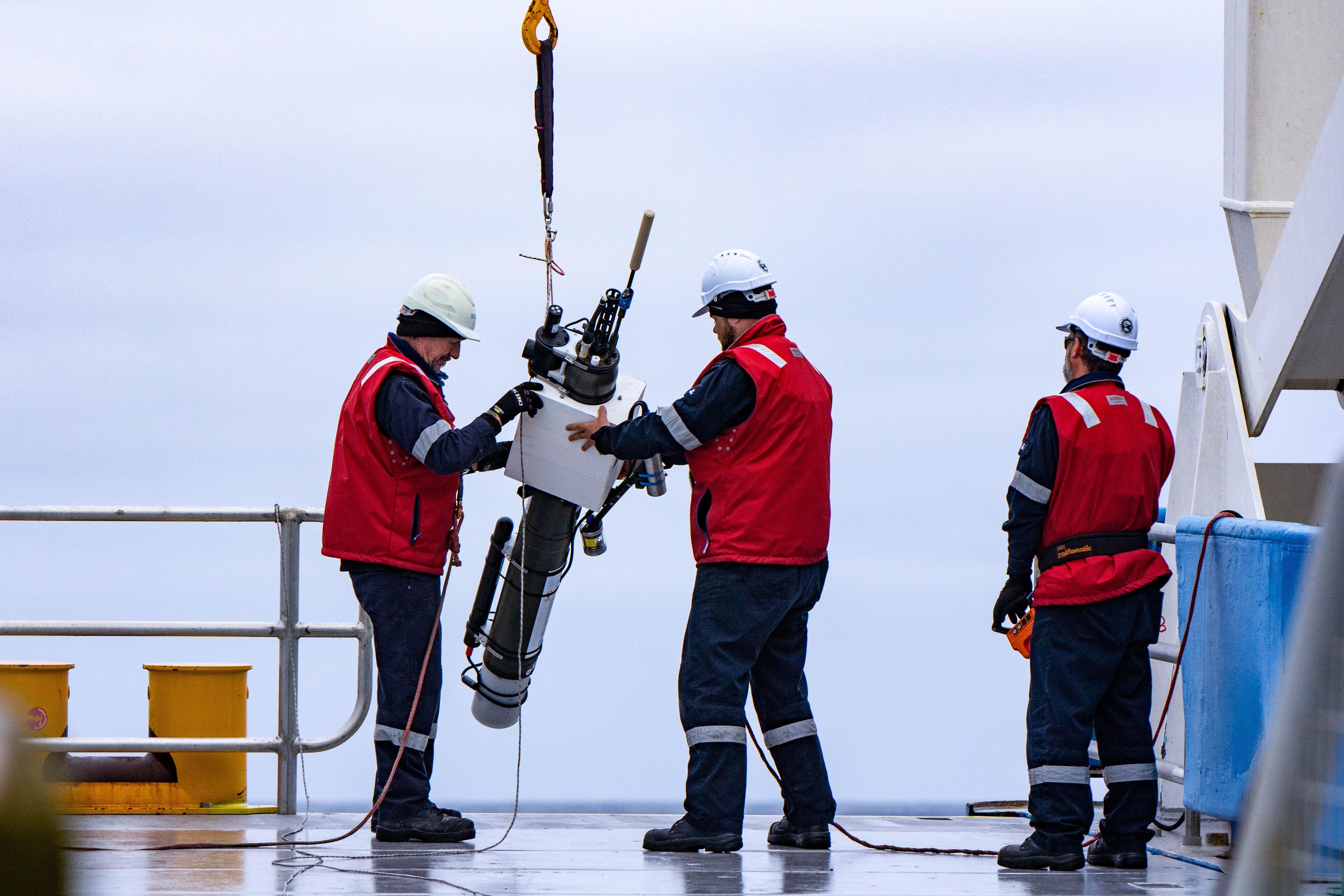What they're used for

Argo floats are a network of 3600 free-floating sensors, operating in open ocean areas that provide real-time data on ocean temperature and salinity.
Argo robotic floats provide essential and in situ data for ocean and climate research and prediction. They are the only means to collect the subsurface observations needed to provide year-round, near real-time information on ocean conditions.
Improving our understanding of ocean conditions will enable us to forecast climate and ocean conditions more accurately.
CSIRO Environment operates Argo Australia, which is a component of the Integrated Marine Observing System (IMOS). Argo floats are deployed, real-time processed, and delayed-mode processed at CSIRO. Argo Australia is operated by CSIRO with cash and operational support from the Bureau of Meteorology, financial support from IMOS, CSIRO, the Antarctic Climate and Ecosystem Cooperative Research Centre and the Australian Government Environment Department.
How they work
The individual floats drift at depths of between 1 and 2 km, before ascending to the surface every ten days, measuring temperature and salinity as it rises. The data are then transmitted to satellites, before the float dives and starts a new cycle.
Key considerations
Argo floats are not a part of RV Investigator's equipment but their deployment and retrieval form an important part of the work carried out by the Marine National Facility.
What they're used for
Argo floats are a network of 3600 free-floating sensors, operating in open ocean areas that provide real-time data on ocean temperature and salinity.
Argo robotic floats provide essential and in situ data for ocean and climate research and prediction. They are the only means to collect the subsurface observations needed to provide year-round, near real-time information on ocean conditions.
Improving our understanding of ocean conditions will enable us to forecast climate and ocean conditions more accurately.
CSIRO Environment operates Argo Australia, which is a component of the Integrated Marine Observing System (IMOS). Argo floats are deployed, real-time processed, and delayed-mode processed at CSIRO. Argo Australia is operated by CSIRO with cash and operational support from the Bureau of Meteorology, financial support from IMOS, CSIRO, the Antarctic Climate and Ecosystem Cooperative Research Centre and the Australian Government Environment Department.
How they work
The individual floats drift at depths of between 1 and 2 km, before ascending to the surface every ten days, measuring temperature and salinity as it rises. The data are then transmitted to satellites, before the float dives and starts a new cycle.
Key considerations
Argo floats are not a part of RV Investigator's equipment but their deployment and retrieval form an important part of the work carried out by the Marine National Facility.
